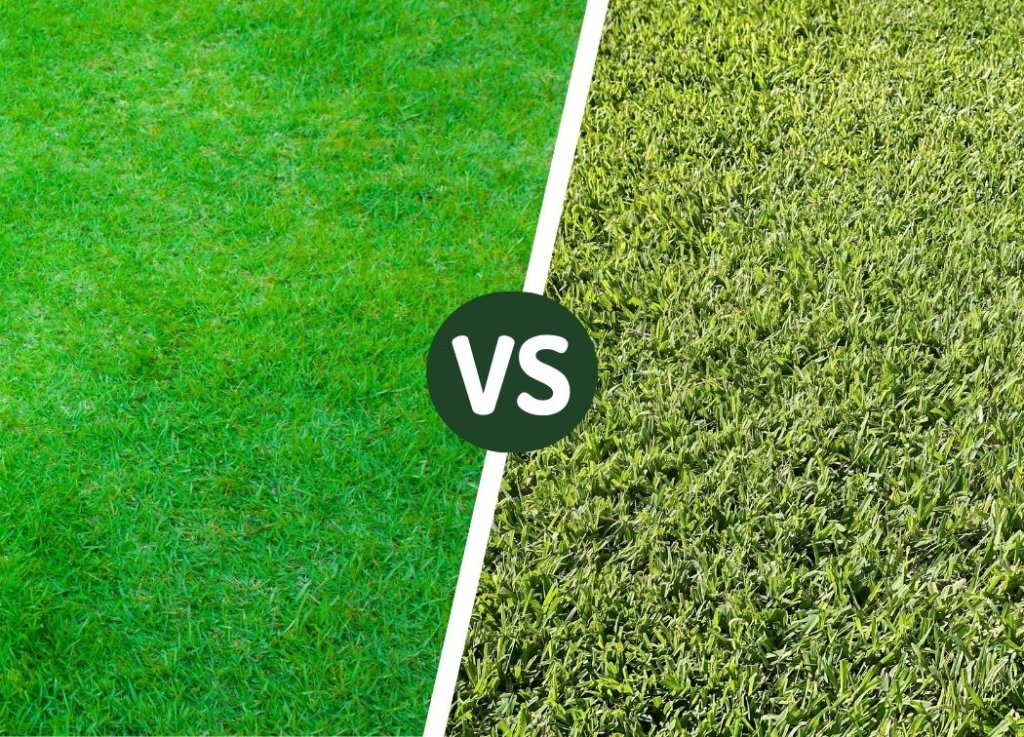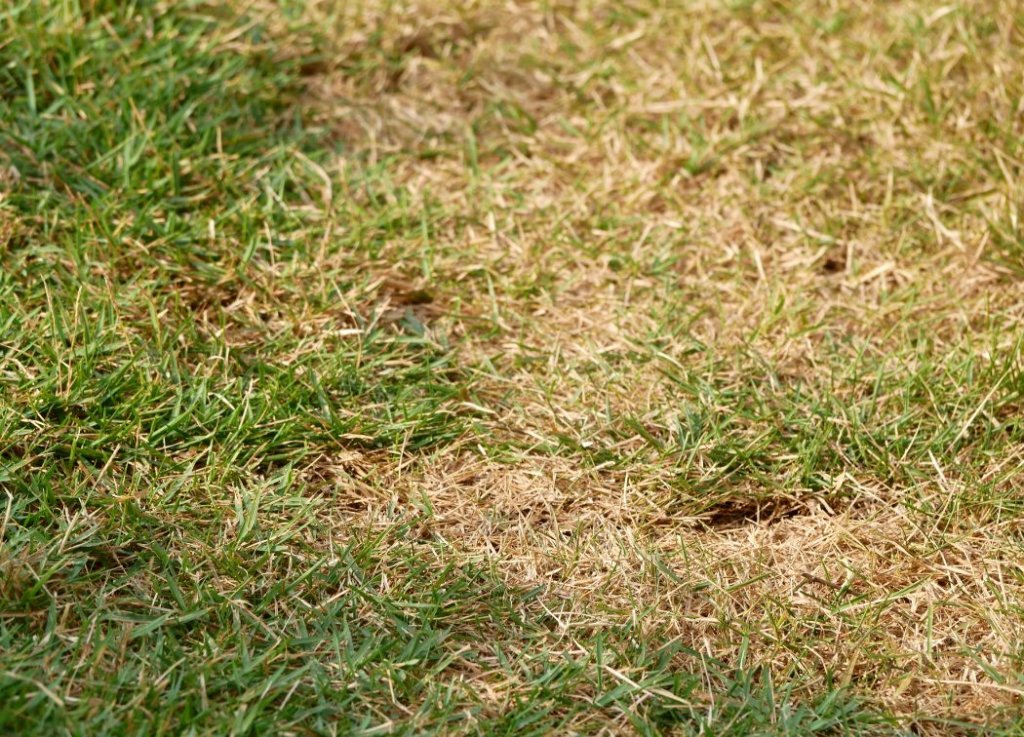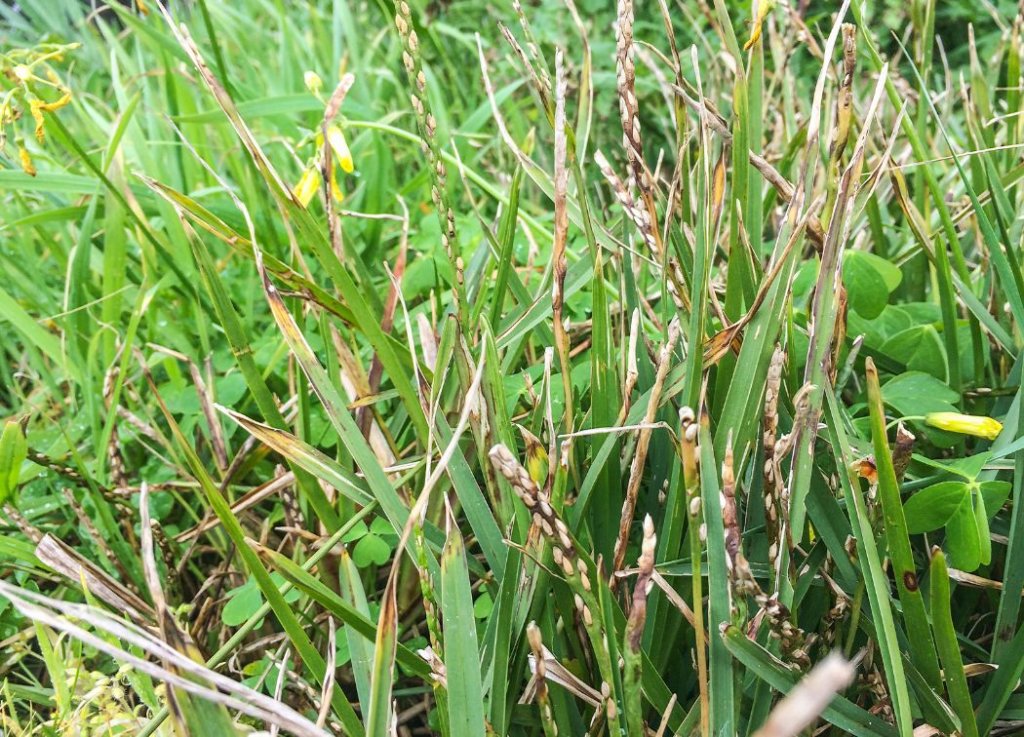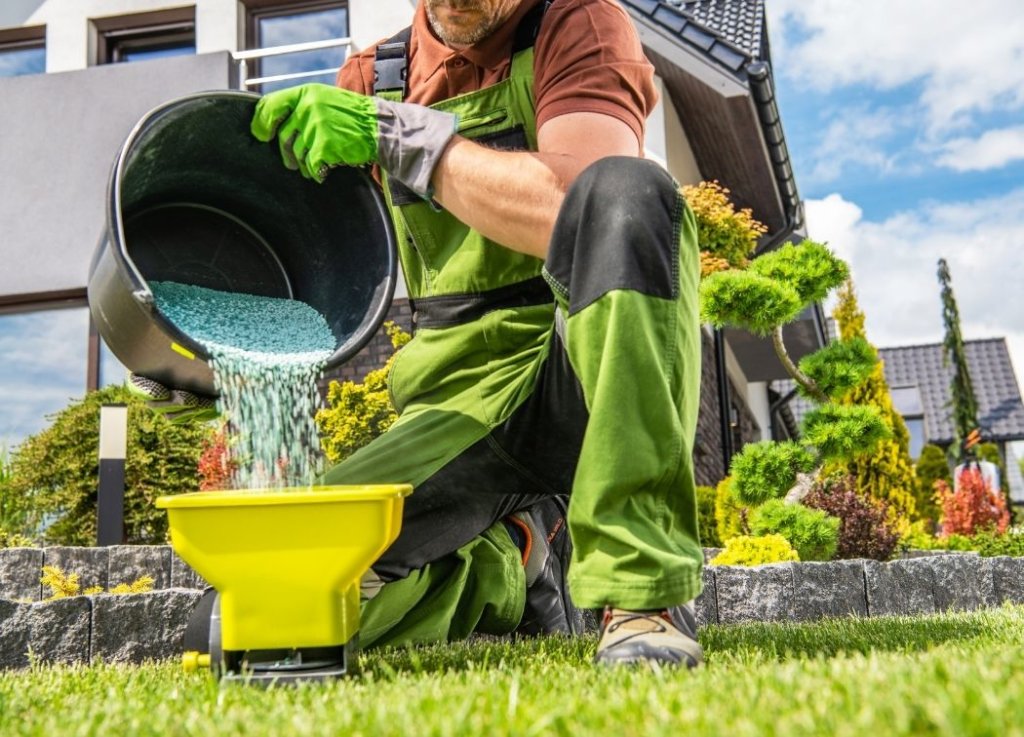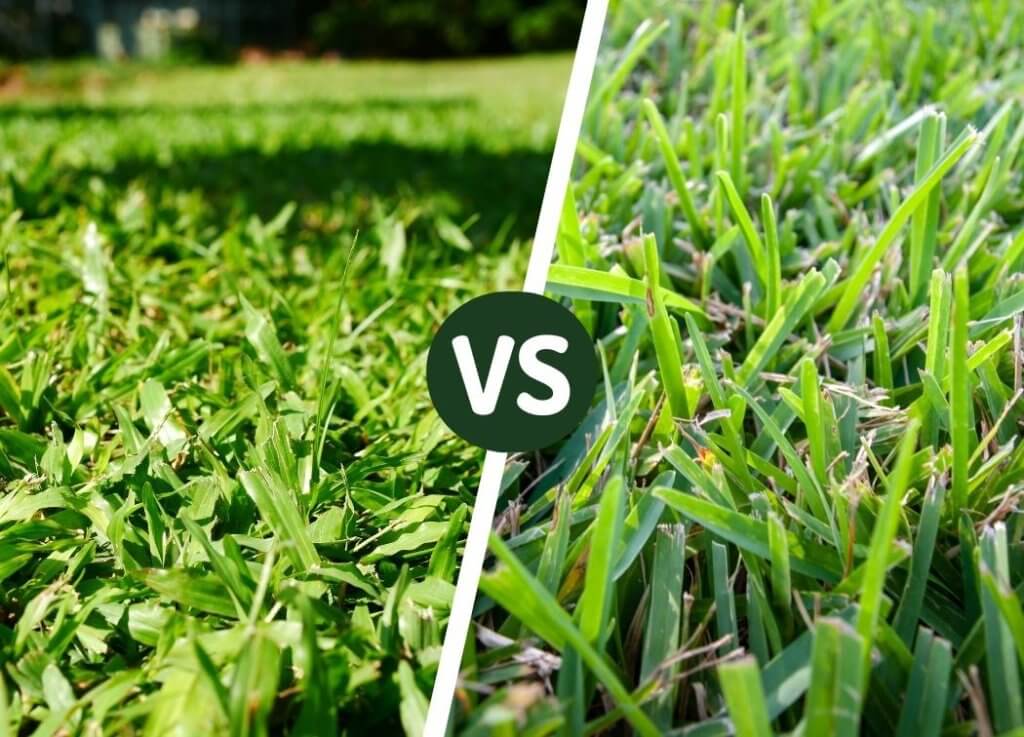When picking grass for your lawn, you have many options available. However, St. Augustine is an excellent choice for homeowners who want warm-season grass.
St. Augustine grass (Stenotaphrum secundatum) is a fast-growing variety of grass whose national origin can be traced back to South America. Often referred to as “Buffalo grass,” this shade-tolerant grass is a member of the Poaceae family, and is a mainstay in residential lawns around the Southern States thanks to its tolerance to warmth. Consider your local water provisions before planting St. Augustine on your yard. This grass is a common sight around the Southeastern United States lawns, thanks to its great need for sunlight. This tolerance to sunlight makes this ideal for lawns in extremely hot areas like Texas or California. St. Augustine is also well-adapted to coastal states like Florida and South Carolina. It has adapted to be salt-tolerant and grows quickly to survive in harsher environments than most varieties of sod.
This guide will tell you everything you’ll need to know about this Southern lawn staple. Read on!
How Can You Identify St. Augustine Grass?
St. Augustine grass can be identified by looking closely at the grass blades. You should see thick turf comprised of flat blades with a coarse texture.
The tips of the blades will be rounded and boat-shaped, with a greatly compressed base. This grass spreads via stolons that spread horizontally above the soil in search of sunlight.
This grass can grow in various types of soil but will do best in soils with good drainage. It’s also intolerant of densely-packed soil like clay but will do well in sandy soil.
It is also perennial grass, so it will last a long time when cared for properly. A lawn with St. Augustine sod can last up to a decade.
St. Augustine grass will generally have a dark green color, though some varieties of this grass may be colored a different shade of green, like Seville.
Species Data
- Tip of Leaf Blade: Wide and blunt; boat-shaped. Lacks hair.
- Leaf Blade Width: 4-10mm in width
- Seedhead/Flower: Seedhead is a thick spike with spikelets situated along the sides.
- Propagation Method: Via sod or plugs. It spreads through stolons and lacks rhizomes.
- Vernation Type: Leaves folded in the bud
- Ligule Type: Short hairs, 0.3mm in length
- Growing Season: Warm-season
- Auricle: No auricle present
What Are the Different Types of St. Augustine Grass?
Lawn owners have created several cultivars of St. Augustine grass to address the various weaknesses of this warm-season grass:
- Floratam – This type of St. Augustine grass was developed in 1973 to resist the St. Augustine Decline or SAD. It bounces back quickly from winter browning and needs to be mowed once every 2 weeks.
- Seville – Seville is a shorter variety of grass with a finer texture than other varieties. It is more shade resistant than other varieties and can tolerate long dry spells.
- Palmetto – Palmetto has a more vibrant shade of green and is less prone to developing thatch than other varieties. It is also softer and more cold-resistant than other varieties.
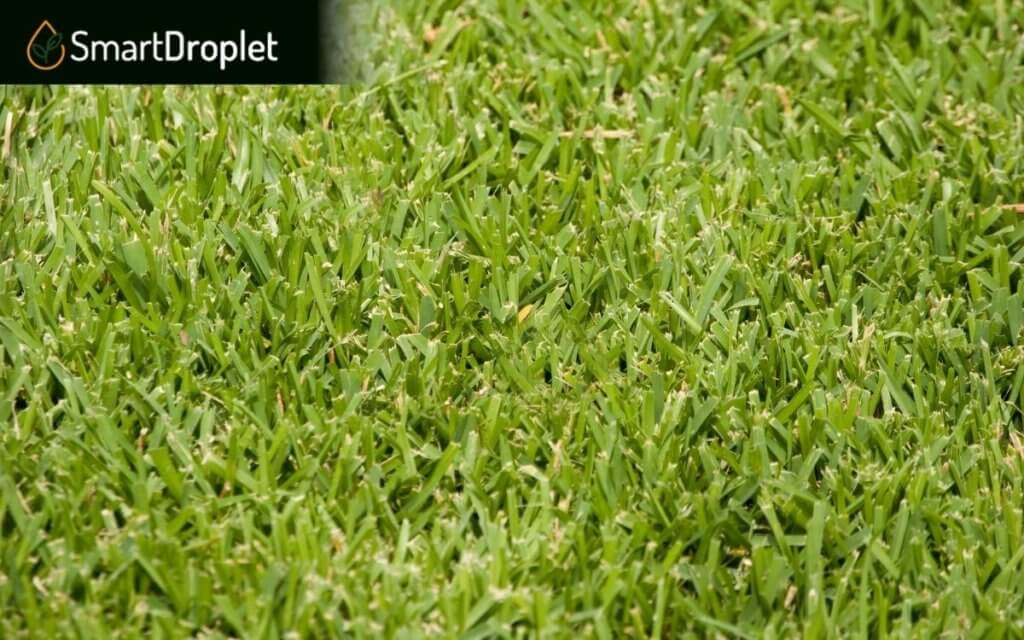
Things to Note When Using St. Augustine Grass
The ideal growing environment for St. Augustine grass is a shady, sunny area near the coast.
Homeowners in the Southern US will enjoy St. Augustine grass because its growing season is during the summer. This sod will grow better in shady areas than Bermuda grass.
Centipede grass has greater cold tolerance but cannot grow in shadier areas like St. Augustine. There is also foot traffic to consider.
Zoysia grass is more tolerant to foot traffic and pressure than St. Augustine due to its development of both rhizomes and stolons, plus it’s naturally softer. However, it’s a slower grower.
The Pros of St. Augustine Grass:
- Grows best when exposed to the full sun
- Crowds out weeds due to the density of its growth
- Cold tolerant and shade tolerant
The Cons of St. Augustine Grass:
- Prone to thatch issues
- Very susceptible to chinch bugs and diseases like large patch
- Cannot tolerate high soil pH levels
What Is the Proper Way to Seed and Plant St. Augustine Grass?
Homeowners can fill out their lawns via either seed or sod plugs:
Planting via Seed
St. Augustine grass is difficult to propagate through viable seed. Homeowners should look into purchasing new sod from a nearby store instead. However, if you can find St. Augustine seed, sow them by hand during late spring. This is to take advantage of this grass’ growing season.
Sow 1/3lb. of seed for every 1,000 square ft. Ensure you wet your lawn evenly while the seed has yet to sprout.
Planting via Sod
This is the more popular and easier way to fill out your yard.
Purchase sod plugs and apply them 1.5 feet apart. Water your soil 1-2 times per week for the first 7-10 days after planting, then wait for the grass to fill in any gaps. Within 2 weeks, your lawn should be properly established.
Soil
This grass type will thrive in various soil types as long as you maintain good drainage around your yard. It cannot tolerate compacted soils like clay.
Keep your soil pH levels between 6 to 7.5 for optimal growth. Apply iron to your lawn to lower its acidity.
Growing Season
Growing St. Augustine grass will yield a dense layer of grass when tended correctly. Like other warm-season grasses, it will grow best when planted in early spring or summer.
Fertilize this variety every 1-2 months during summer, and autumn/fall if your yard lacks nutrients.

How to Take Care of St. Augustine Grass
Here’s how to ensure your lawn grows thick and lush!
1) Fertilization
Fertilize your St. Augustine grass in the early spring, and apply your chosen fertilizer every 1-2 months. Conduct a soil test if necessary to determine what your yard requires.
Avoid applying nitrogen to keep from raising your soil’s pH levels. This can damage your yard if timed incorrectly.
2) Lawn Mowing
Lawns planted with St. Augustine grass will require regular mowing. Before you mow your lawn, sharpen your lawnmower’s blades.
Blunt tools will damage your grass blades and put your sod at risk of developing diseases.
TAKE NOTE: St. Augustine grass is particularly susceptible to diseases and pests.
Begin mowing your lawn in early spring to take advantage of the spring green-up period. Mow regularly once per week from spring until the end of summer.
Maintain this schedule until the beginning of fall. Throughout fall and winter, St. Augustine grass will enter a period of dormancy and can be mowed once every 2 or 3 weeks.
3) Watering
Watering St. Augustine grass is a simple affair and similar to other warm-season grasses. Water, the ground until the soil, is soaked 6 inches deep, but don’t overwater the lawn.
Leaving your grass overwatered for long periods will create a favorable growing environment for weeds and turf diseases like a large patch.
Homeowners in drier areas who want drought tolerance in their grasses will appreciate St. Augustine grass. This grass will survive a mild dry spell, but not an extended one.
To cultivate drought-resistant sod, water your lawn only when it displays symptoms of drought stress: The leaves will turn dull blue instead of green and may roll up or fold.
4) Pest Control
As late spring turns to summer, homeowners should beware of chinch bugs infesting their sod. These insects are harmless individually but can spiral into an extreme issue if left to spread.
The signs of a chinch bug infestation match other lawn issues like a large patch and dry spells. Your grass will turn yellow before eventually browning and dying.
Keep a close eye on your sod during the growing season, especially in areas closer to the sidewalk. Inspect any areas with thatch near the sidewalk for signs of an infestation.
When fully grown, these insects can develop a resistance to insecticides, making early detection and prevention crucial. Clear signs of damage will need professional assistance.
5) Weed Control
This turf is called “Carpet grass” due to its exceptional thickness and density when grown properly. This makes it difficult for weeds to sprout among the turf.
However, lawn owners must still exercise proper weed control for a healthy batch of turf. Apply a pre-emergent herbicide during winter to reduce the chance of weeds cropping up.
St. Augustine can react poorly to post-emergent herbicides with 2,4-D, so dilute your herbicide before application. The time for any pre-emergent herbicide application for early spring.
6) Aeration/Dethatching
St. Augustine lawns are prone to thick layers of thatch, leaving your yards susceptible to diseases and pests.
Time your aeration for late spring to early summer to coincide with the grass’s growth season.
CAUTION: You shouldn’t aerate your yard after applying a pre-emergent herbicide.
The herbicide will require undisturbed soil to protect your lawn fully. Poorly-timed aeration will curb your herbicide’s efficacy.
7) Overwintering
St. Augustine grass can handle the winter frost well. This grass will survive on lawns from hardiness zones 7 to 12 but may turn brown due to frost exposure.
Homeowners can mow their lawn less often during winter, as this grass slows its growth. Raise your mower’s height and cut your grass once per 2 months.
Note that your grass may turn yellowish during winter. This can be alleviated by applying 2oz. of diluted liquid iron per 4 gallons of water to the lawn.
Before treating your grass, wait for the summer. When soil temperatures start warming up, this yellowing may disappear without intervention.
8) Disease Control
Large patches are a fact of life with St. Augustine grass. This fall-time disease is caused by excessive moisture in your soil and grass.
Avoid this disease by following proper watering procedures. Keep your St. Augustine grass resistant to dry spells by only watering the soil when it shows signs of drought stress.
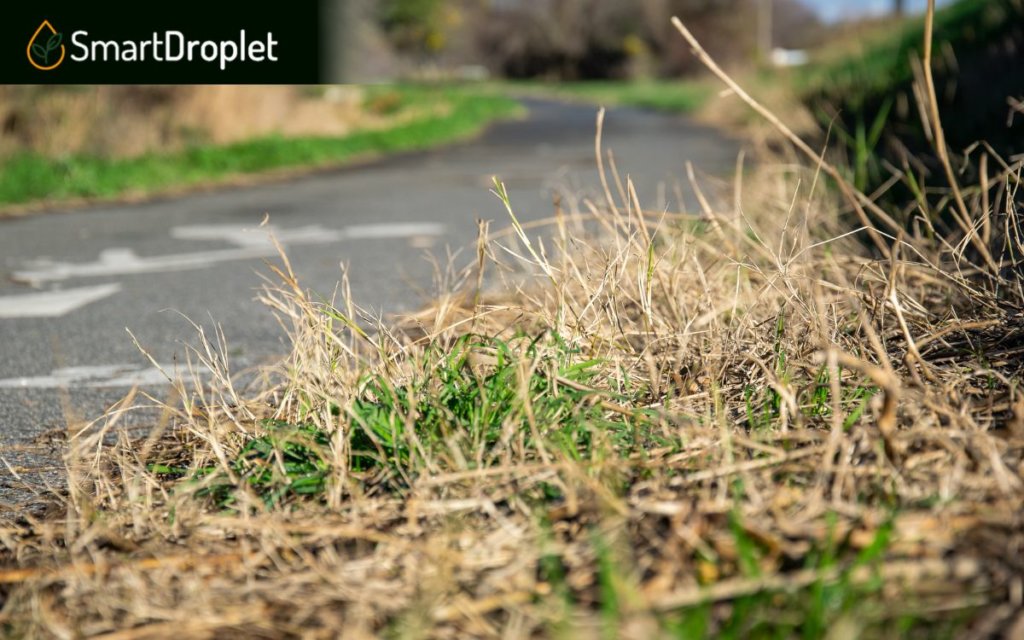
What Are the Common Issues to Expect With St. Augustine Grass?
Before filling the site of your new lawn with this grass, read this guide to learn the issues of this grass.
Insects and Other Ground-Based Pests
Summer will bring out the warmth and the sunlight that St. Augustine grass needs for growth, but it also comes with chinch bugs. These are the most destructive pests for your sod.
Note that insecticides applied to your grass may kill adults but leave the eggs unharmed. This will leave another batch of these pests to damage your grass.
Mole crickets are another turf pest homeowners need to avoid. Check your yard for patches of loose soil and signs of tunneling to identify whether you have a mole cricket infestation.
Apply insecticides during the summer to minimize pest damage. Wet the soil before application to ensure the mole crickets are closer to the surface.
St. Augustine Decline
Otherwise known as SAD or panicum mosaic virus, this affliction typically affects grasses in the Poaceae family. This disease spreads via wounds on the grass blades, typically from mowing.
Lawns infected with SAD have no method for disease control. SAD can spread via wind and rain in the environment, along with planting infected sod on your lawn.
You may also mow during summer or dry spells if your lawn has been infected. The heat will ensure that the infected sap cannot spread.
Frequently Asked Questions (FAQs)
Learn more about St. Augustine grass here!
Where Does St. Augustine Grass Grow Best?
St. Augustine grass grows best when exposed to the full sun, which makes it ideal for lawns in the Southern United States like South Carolina, Florida, and Texas.
Homeowners in California should check where their homes are situated. St. Augustine grass will not survive a particularly harsh winter and will grow best in Southern and Central California.
Apart from its fine cold tolerance, this grass is also salt tolerant. This makes it a suitable turf for coastal areas that may experience lots of heat.
Is St. Augustine Grass Hard to Maintain?
St. Augustine grass is fairly high-maintenance compared to other grasses. It has both shade-resistant and heat-resistant varieties and grows quickly.
Any weeds among your St. Augustine grass must be pulled by hand to avoid agitating your turf. Your turf will lose its signature green during periods of frost and enter dormancy.
Apply a pre-emergent herbicide before spring begins to halt any weeds from crowding out your turf after winter.
One benefit of this grass is its lax mowing schedule. You won’t have to trim a St. Augustine grass lawn as often as other grasses.
Does St. Augustine Grass Spread Quickly?
St. Augustine grass will grow particularly quickly, especially if planted during the height of its growing season, around spring and summer.
Because this grass spreads via sod plugs, it’s easy to fill a site. Lawn owners can pick up a large batch of sod to quickly set up their lawns.
Note that this grass thrives in soil with good drainage, so ensure that your lawn is NOT composed of clay soil. This will create an unfavorable growing environment.
If your St. Augustine grass is not growing despite the ideal growing conditions, get in touch with your local university extension office. Submit a proper soil sample and wait for the results.
Which Grass Is Better, Bermuda or St. Augustine Grass?
Among warm-season turfgrasses, Bermuda grass and St. Augustine grass are often pitted against each other. Both kinds of grass will thrive in warmer climates and can choke out weeds.
St. Augustine grass will typically require more water than Bermuda grass, making it not ideal for lawns in areas with water conservation policies.
However, Bermuda grass cannot thrive in the shade like St. Augustine grass. Growing in shady areas will stunt a Bermuda lawn.
Thatch is also a recurring issue with St. Augustine grass. Its density and fast growth make dethatching a regular requirement compared to Bermuda.
Identify the needs of your lawn and whether your area has any watering provisions before choosing between Bermuda and St. Augustine.
Conclusion
Lawn owners in Florida and South Carolina will appreciate St. Augustine grass. This hardy grass thrives in tropical climates but is also quite cold tolerant.
St. Augustine grass’s growth speed and density make weed control easier, but be aware that this also leads to thatch issues.
Despite being naturally coarse-textured, there are varieties of St. Augustine grass with a finer texture. When treated properly, this green grass will create a fine set of turf!

